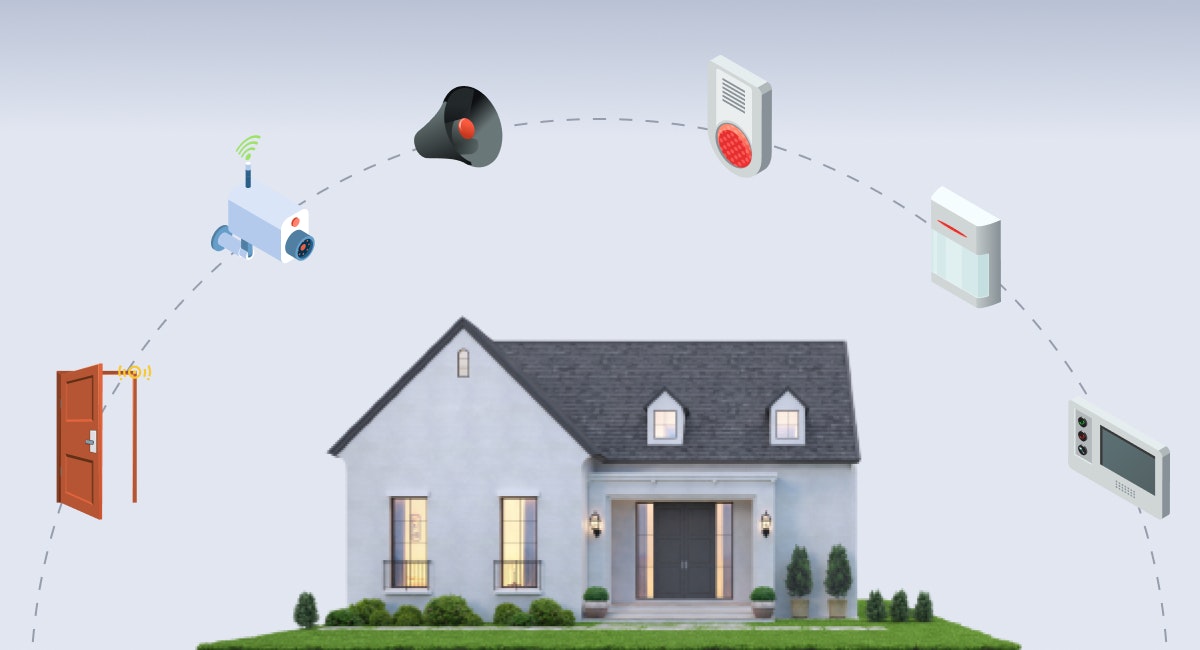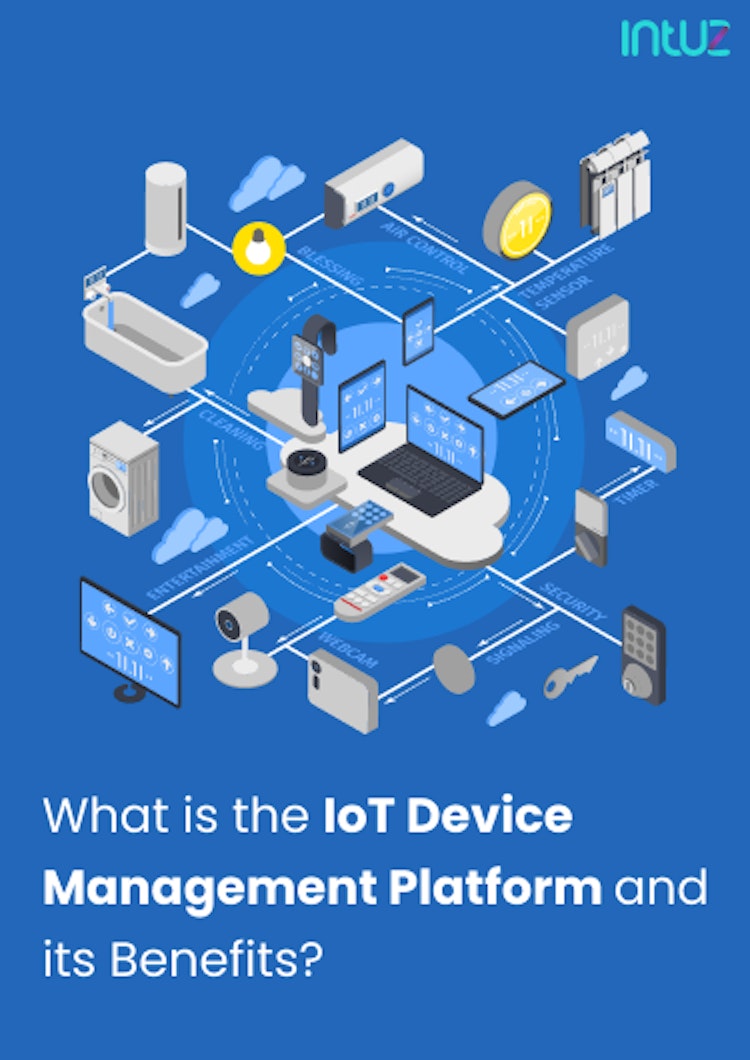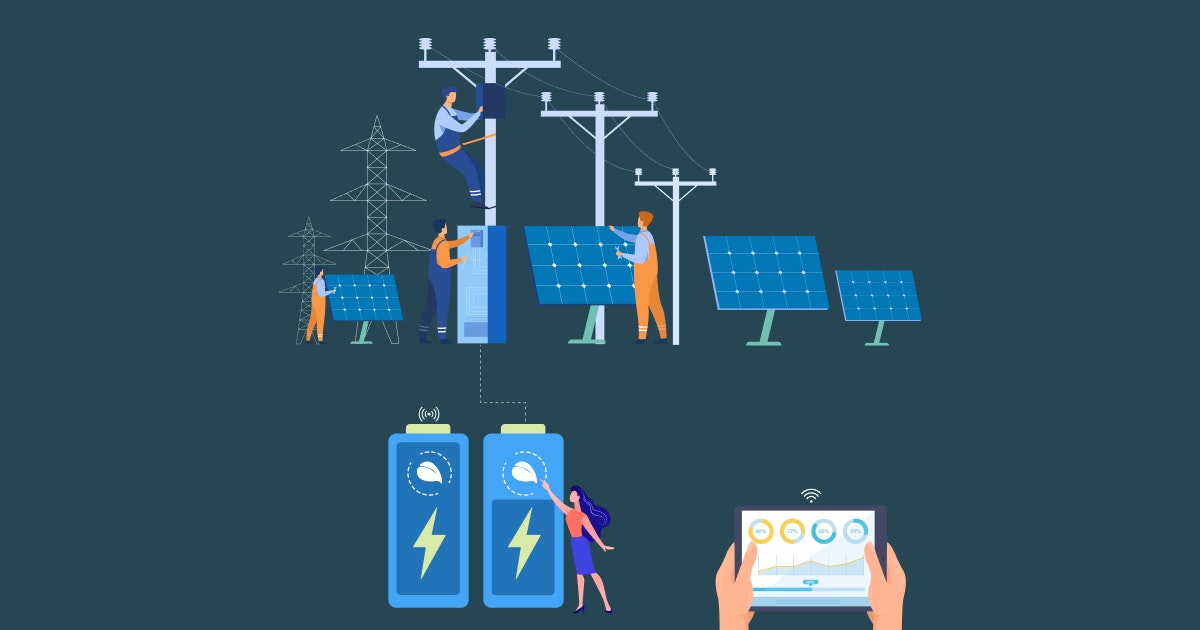Table of Content
Digital transformation takes a customer-driven, digital-first approach to all aspects of business, from customer experiences to processes and operations.
It leverages automation, AI, hybrid cloud, and other digital technologies for leveraging data and driving smarter workflows. Today's market is undergoing a full-scale transformation, or as we like to call it - a digital revolution.
Technology is evolving rapidly, and IoT is the newest addition to our world. It has become a part of our lives in ways we could not have imagined just a few years ago. With IoT technology, all eligible electronic devices can connect and transmit data about their usage and environment.
In 2022, the market for IoT is predicted to grow 18% to 14.4 billion active connections. As supply constraints ease and growth accelerates, there will be approximately 27 billion IoT-connected devices by 2025. These are exciting times in the world of IoT.
to manufacturing and automotive, there is not one industry where IoT technology has not carved a niche for itself. Home automation is another market that has achieved great strides with IoT.
Smart home devices often work with voice commands and follow the rules of automation., and help in managing and monitoring things easier for the users. The home automation systems market is fast growing and is estimated to be worth $63.2 billion by 2025.
IoT and smart home automation: An overview
It is not possible to ignore the comfort that IoT adds to our homes. For instance, by using smart devices connected to the internet, you can make your coffee ready when you get up in the morning or set your thermostat to an ideal temperature before you reach home from the office.
Besides, you can control the air control, switch off lights, lock the doors, and keep an eye on the house while you are away - all from your smartphone.
IoT is a technology that creates a network by connecting various smart devices. The installed pieces of equipment are accessible on the network, giving you complete control over them even remotely. Imagine accessing your home's appliances through an app on your phone.
You can optimize energy usage and enjoy cost savings from using lamps, AC, refrigerators, and fans. Internet-connected gadgets help improve our everyday life and guarantee security and better living standards.
What Is a IoT-Based Home Security System?
IoT-based home security system is a network of internet-connected devices—like cameras, door locks, motion sensors, and alarms—that work together to monitor and protect your home in real time.
IoT devices manage the surveillance in and around the home, along with keeping track of who has access to the doors if they are equipped with smart locks. Smart security systems give you peace of mind while you are away.
For instance, smart doorbells can identify strangers and communicate with them before unlocking your front gate. The devices have high-definition cameras that get automatically activated by motion.
They notify you about any changes and can trigger an alarm or even call the police to ensure the safety of your home.
Secure Your Home with IoT: Start Your Smart Security Project Today!
Explore NowAdvantages of an IoT home security system
There are many benefits to having a smart home security system. Far beyond traditional capabilities, IoT enables you to remotely monitor and manage your house using an app on your smartphone. Is that not cool? Here are the benefits of deploying IoT for home security:

Key Benefits of IoT Enabled Home Security Devices
1. Manage and monitor security
IoT provides smart home security by combining AI to enhance the performance of devices such as CCTV cameras, smart lights, doorbells, and fire sensors. Everyday use cases of IoT smart security solutions include data loss prevention, secure connections, and device authentication and management.
2. Alert and attempt
Remote monitoring keeps you informed about every minute detail of your house in real-time and raises the alarm if the IoT-connected devices detect any unusual activity. The future of home security is now in your palm, thanks to superlative IoT app development.
Home IoT systems use AI to read changes in the environment and alert users. You can monitor your home even from remote locations. The devices trigger an action in response to the alert.
3. Visitor identification
Smart IoT devices enabled by video allow you to communicate with visitors. You can see the visitors from your smartphone and talk to them without unlocking your door, even when you are away. It ensures complete security and convenience.
Risks to your IoT smart home
A significant risk to deploying IoT in your smart home is the lack of regulation regarding the use and security of IoT devices. In the absence of global security standards, there are concerns around privacy and data security when using IoT devices.
Every connected IoT device in your home is a data collector. Therefore, unless you want other people to know how you live your life, you will need to secure each system that collects and stores your personal data.
For instance, users and authorities are still wondering if your connected refrigerator will keep track of only the events happening inside it or even the ones on the outside. There is still a debate on how these devices can be used effectively without compromising user privacy.
The boom in the IoT market is putting a lot of pressure on manufacturers. As they strive to take advantage of the industry growth, they are pushing out as many products as possible. Unfortunately, adequate attention to IoT security and data privacy issues is not being paid.
Besides, as devices get replaced with newer ones, there is minimal focus on keeping the older ones updated, and security patches are not readily available. These vulnerabilities put your personal data at risk.
Each IoT device is connected to the internet and constantly vulnerable to new threats. Old devices such as outdated security cameras are easy targets for inexperienced hackers.
Cybercriminals are using newer technologies to take control over devices to get access to your life. They could hack your webcams, CCTV cameras, and baby monitors. There are several other instances they can cause harm. Some of the instances include
- Heating and lighting systems can be hacked to determine if occupants are away from home.
- Voice commands given to voice-based digital assistants such as Amazon Echo can be used to capture bank account details and other sensitive information.
- One can hack the IoT device you have been using to control your home's innovative features by installing ransomware. Criminals may make your entire house inaccessible for you unless you pay them.
- Hackers can use your devices to work for them as bots and execute cyberattacks. They may induce attacks such as Distributed-Denial-of-Service (DDoS), password hacking, and click fraud. They could also send out spam or mine cryptocurrency using your systems.
The regulations deployed by the security authorities across Europe and North America have compelled businesses and individuals to seek better IoT security measures for fighting malicious cyber-attacks and fraudulent intrusions into the network of IoT devices.
Remember 2016's east coast internet outage in the US?
The Mirai botnet is one of the most destructive IoT attacks on record. It hacked into and compromised 100,000 IoT devices in 2016 and managed to leave much of the internet inaccessible on the US east coast one fine day.
Mirai is a cleverly designed program that takes advantage of our daily internet use vulnerabilities. Six years ago, it leveraged the lapse at the user end where the users did not change the default username and passwords or left devices on factory settings.
The botnet used the details to launch a DDOS attack on Dyn, a company that allows you to access your devices from the internet through an easy-to-remember domain name. This allowed Mirai to capture the company's domain registration services.
Though the original creators of Mirai were tracked and put behind bars, there is speculation that more Mirai-based DDoS attacks might crop up in the future. Therefore, it is better to prepare now than be sorry later.
Examples of IoT-based home security system
In a nutshell, IoT-enabled devices allow you to perform simple tasks like turning on your geyser or complex ones, such as start cooking dinner with just the push of one button. Home IoT devices undoubtedly offer unparalleled convenience. Following are the critical devices that make a home smart - you will be surprised:
1. Smart home security
People invest in smart home security systems to make their homes smarter and secure. These innovative solutions provide keyless access to your house and update you real-time about its safety status. Digital locks use a pin or allow you to unlock your door through a phone.
2. Smart locks and alarms
Smart locks increase your home's security and let you control the main door remotely. You can set a timer to allow entry to people at a specified time. For instance, a product called the eyeLock works as an iris-based authentication system to allow access to authorized personnel only. IoT-powered locks also work as smart burglar alarms.
3. Cameras
IoT allows you to monitor your home using cameras. Many thing offers a revolutionary smart security product that will enable you to use cameras of smartphones and tablets for free.
Their application turns these functionalities into sophisticated video monitoring cameras that offer live streaming and motion detection. The devices use the IFTTT protocol to send an email or a text alert in suspicious or unusual events.
Types of IoT-based smart home security devices
The demand for home security is on the rise these days, and a wide variety of devices in the market can help you keep an eye on your place of residence. However, not all IoT technologies have the same potential or features.
Some of the devices provide more value than others in terms of functionality for monitoring and securing homes. Here is a list of the major components of IoT-enabled home security systems you should know about:
1. Smart cameras
The role of a security system for homes is not complete without incorporating smart cameras. They act as digital eyes of your house and help you monitor all movement in real-time, both inside and outside of the premises.
There are many smart cameras to choose from, such as wireless IP camera systems that can be accessed anywhere with an internet connection. Door cameras or gate cameras can do the surveillance footage for monitoring areas around the front gates
2. Biometric locks
The use of biometrics in our everyday life is quite common. IoT-based smart security locks use fingerprints or facial recognition to grant access to the user. These biometric locks can provide robust security to any premises while eliminating the need for keys.
3. Video door entry systems
Video door entry systems can help you enjoy the benefits of comfort and security by letting your voice and face be used for access control in your home. These video monitoring solutions are compatible with Siri, Amazon Alexa, or Google Home.
They work seamlessly together so that you can utilize the capabilities of interoperability. Installing these devices allows you to monitor your house remotely and even talk to visitors through video calls.
4. Fire/smoke sensors
Installing fire or smoke sensors in your home is essential, so you can be alerted immediately if there is an issue. Smart homes usually come equipped with carbon monoxide detectors, which send warnings when they detect high levels of dangerous gas in houses.
They can also trigger a call to the fire department or automatically turn on the sprinklers to keep the situation under control and not allow the fire to damage your property or cause fatalities.
5. Motion sensors
Motion sensors are an essential part of your home's security system. They can trigger alarms to let you know that activity is happening in or around the house. These systems report suspicious movement by recording and analyzing vibrations and inputs in 2D and 3D.
6. Connected switches
Smart switches are another critical element of smart home security solutions. They can be controlled via smartphones, tablets, Siri, Google Home, and Amazon Echo. You can comfortably control lights, curtains, and electrical appliances through the devices to offer convenience and improve your experience.
7. Management panels
Smart tablets can be customized to control devices connected by the IoT. They facilitate home security management by offering information from connected devices. You can watch the camera footage and control the working of all IoT devices, such as lights, heating systems, and door entry systems.
Top 6 smart home security devices
Smart home security uses a collection of IoT-enabled products to allow you to monitor and manage the security of your home remotely. In the following section, we will study six smart home security devices that will impress you:
1. Vivint

Vivint Outdoor Camera
This is a custom-built smart security system that works to keep your home safe. Its product suite comprises devices such as outdoor cameras, smart doorbells, and smart locks. Automation allows you to keep an eye on your home through live streaming. These systems constantly monitor your house and raise the alarm in case of unusual activity.
2. SimpliSafe

SimpliSafe home security solution
SimpliSafe is an award-winning home security solution that protects completely from fire, burglars, and natural disasters. Professionals monitor the entire system, and an alarm is raised in case of an emergency. Besides smart devices, you can make full use of the professional assistance offered by the SimpliSafe team.
3. ADT

ADT home security solution
ADT is a best-in-class home security solution that delivers professional monitoring and assistance against intruders. It offers essential protection against fire and CO detection by ringing the alarm. The comprehensive security system provides live streaming and video recording facilities. ADT provides both professionally and self-installed products to suit your needs.
4. Abode

Abode home security system
Abode brings forth wireless home security systems that connect with your house door sensors, motion detectors, cameras, and other devices. Equipped with a 93-decibel siren, the solutions efficiently work as an alarm system. The security device integrates with up to 160 products so that you can upgrade your security as needed.
5. Ring Home Security System

Ring Alarm pro
The whole-home protection solution offers you complete peace of mind. Ring allows you to build your security system using their advanced devices, which are enabled with built-in WiFi, offering up to 24-hour power backup and 24/7 professional monitoring.
6. Brinks

Brinks home security systems
Home security systems by Brinks comprise premium products and professional assistance. Intelligent systems allow you to monitor and control your house remotely. One can bundle up their security and monitoring products to create a bespoke solution for your house.
How an IoT home security system works
Setting up an IoT (Internet of Things) smart home security system involves integrating various connected devices and sensors to monitor and protect your home. Here are the brief steps to set up such a system:
1. Choose a smart home hub
This is the central control unit that connects and manages all the smart devices. Popular options include Amazon Echo, Google Home, Samsung SmartThings, and Apple HomeKit.
2. Install security cameras
Wireless security cameras are a crucial component of any smart home security system. Position them at strategic locations like entryways, windows, and hallways. Look for cameras with features like night vision, motion detection, and two-way audio.
3. Set up smart locks
Smart locks allow you to lock and unlock doors remotely using your smartphone or voice commands. They also provide access logs and temporary access codes for guests or service providers.
4. Install motion sensors
Motion sensors can detect movement within your home and trigger alerts or automatic actions like turning on lights or recording video.
5. Consider smart lighting
Smart light bulbs and switches can be programmed to turn on and off at specific times or when motion is detected, creating the illusion that someone is home.
6. Integrate smart smoke and carbon monoxide detectors
These detectors can send alerts to your smartphone or trigger other smart home actions, like turning on lights or unlocking doors for emergency responders.
7. Set up smart home monitoring
Many smart home security systems offer professional monitoring services that can alert authorities in case of a break-in, fire, or other emergencies.
8. Configure automation and rules
Use the smart home app or hub to set up automation and rules for how your devices should behave in different scenarios, like turning on lights and cameras when motion is detected or arming the system when you leave home.
9. Enable remote access and notifications
Configure your system to send alerts and notifications to your smartphone or other devices when specific events occur, like motion detection or door/window openings.
10. Secure your network
Ensure that your home Wi-Fi network is secure with a strong password and enable two-factor authentication if possible. Consider using a dedicated IoT network or virtual private network (VPN) for added security.
Remember to regularly update the software and firmware of your smart home devices to benefit from the latest security patches and features.
Conclusion
Your smart home will make your life convenient and help you save time and effort where automation can come into play. However, you must reserve a bit of time to maintain it properly as a part of your IoT home security strategy.
We live in a day and age where every device needs its firmware kept updated. When you are installing devices, it is always a good idea to check for updates on the manufacturer's web page to do the needful.
Thanks to IoT, the days of manually checking the locks and windows of your home before stepping out may be almost over. However, that does not mean you entirely rely on technology and forget its upkeep.
IoT devices have the potential to ensure the security of your home from all possible issues and transform those four walls into a house of the future. The best home security systems allow you to monitor and enable automation in your place of residence easily.
Are you a home security system provider or device manufacturer seeking to integrate IoT and develop custom IoT applications for advanced security automation?
Book a Free 45-minute Consultation with Our IoT Experts Today!
During this personalized session, our experts will:
Assess your current home security offerings & requirements - feasibility assessment
Develop a tailored IoT strategy for smart home security
Provide a detailed implementation plan for seamless IoT integration





